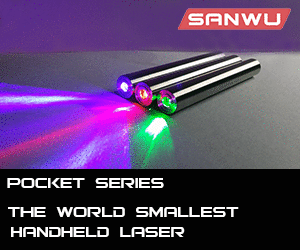MarioMaster said:
it's pretty well known around here that laserchecks aren't the best measuring devices around
How do you know this? Has somebody carried out a comparison test? With how many lasercheck units? From different batches? How did he/she calibrate the other power meter(s) used for comparison, ensuring the readout is accurate enough to be representative?
I'm sure a lasercheck not the best meter available for money, but unless somebody shows proof that complies to the above I'm going to believe the specifications given by the manufacturer. And
+5% is simply fairly accurate.
As for the difference between a photodiode power meter and a thermal one: made me curious and search on the internet a bit. Both types seem to have their (dis)advantages, photodiode meters are indeed wavelength dependent, but that's not a problem if you know the wavelength of your laser. Which most of us do here. As for the dot size: when I measured my lasers with the optical power meter at my work, the dot size did not affect the readout. As long as the entire dot hits the detector surface it's fine. This was particularly demonstrated with the dilda, which has a focusable lens. There personal findings are backed up by Sam's laser FAQ, I discovered.
Thermal meters seem to suffer from thermal interference and drift. According to Sam's laser FAQ they cannot reliably measure low powered lasers, less then 20mW, unless the thermal head is sufficiently insulated from ambient temperature. Thermal meters on the other hand are more fit for high powered, multiline and pulsed lasers, and are recommended for laser powers over 50mW. But... in the same article it's mentioned that the calibration of a DIY thermal power meter is
+10% at best. And the thermal power meters most people use here seem to be of the DIY kind.
http://www.repairfaq.org/sam/laserioi.htm#ioitlpm


